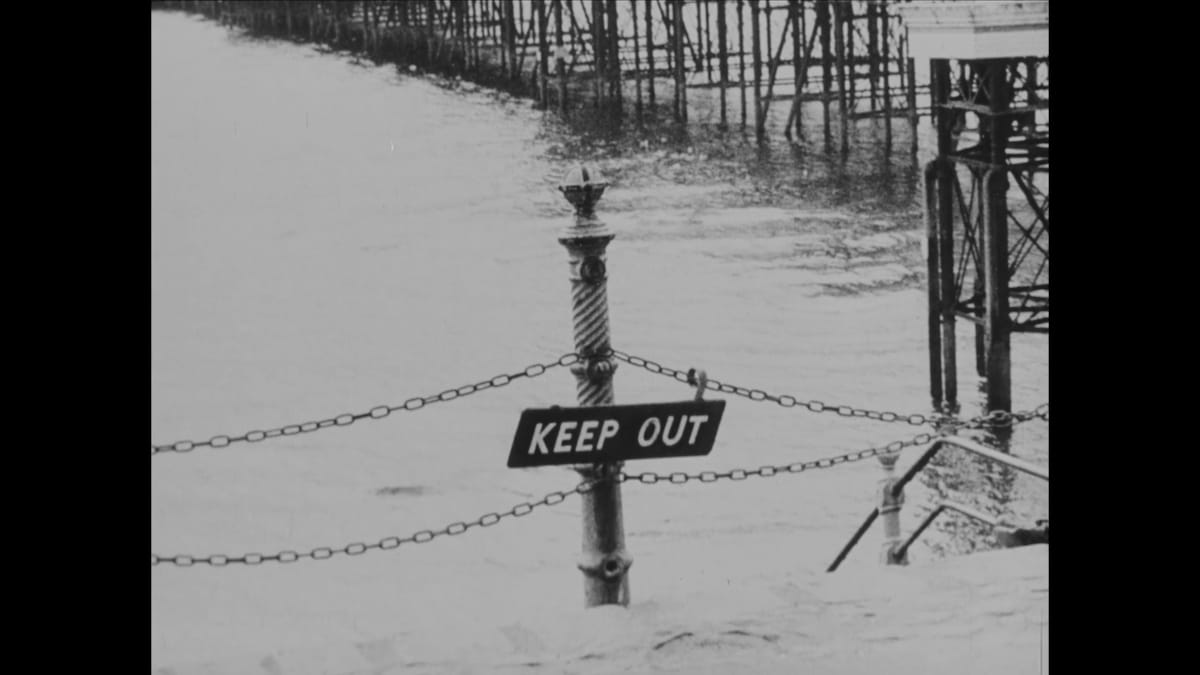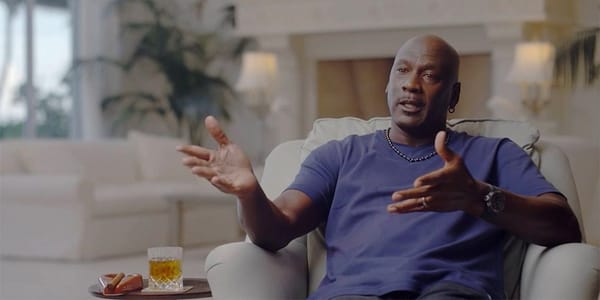Stop Laughing, This Is England

This sixty-year-old short film based on pictures and observations by Henri Cartier-Bresson is a scarily accurate and perceptive portrait of England then and now (still: ©La Cinémathèque Française)
“What’s at the bottom of being English? Perhaps the answer is: no. A prohibition, an inhibition, far from whole hearted but generally observed.” This astonishingly accurate and breathtakingly brutal observation opens the 1963 short film Stop Laughing, This Is England (Cessez de rire, voici l'Angleterre), assembled by Douglas Hickox (who would direct ten years later another ironic film, Theatre of Blood) and exclusively made up of pictures taken by Henri Cartier-Bresson. The film only becomes harsher from there, and it is hard to imagine that this was the kind of reportage the private British television channel ITV/ABC had in mind when it commissioned the world famous French photographer to shoot, over two trips in 1962, the towns of Blackpool, Liverpool, Manchester and Sheffield. After all, Cartier-Bresson allegedly had great affection for England, and was bilingual ever since his studies at Cambridge — hardly a fish out of water that would react with hostility to a culture different from his own.
Or perhaps the commissioners knew exactly what they were doing. When Cartier-Bresson covered the coronation of King George VI on 12 May 1937, he was not interested in photographing the ceremony or any of the royals in attendance, and instead pointed his camera at the crowd. To say this was only because of his predilection for street photography — of which he was a pioneer — would be to ignore the obvious political critique on display in some of the pictures from that day. One shows a crowd assembled on the stairs in front of Nelson’s column on Trafalgar Square, packed like sardines and craning their necks all in the same direction, presumably to catch a glimpse of the action; under their dangling feet, in a sea of old newspapers, lies a man, passed out, perhaps drunk or homeless.
The pictures in Stop Laughing are less obviously critical than this one, but together with the voiceover commentary, reportedly based on Cartier-Bresson’s own notes, they show not just a talent for observation but also a familiarity with Englishness that feels rooted in a real knowledge of the subject. In just over twenty minutes, Cartier-Bresson and Hickox paint a staggeringly profound and far-reaching portrait of a nation, touching on everything from an apparently intrinsic desire for dominance, an inescapable individualism, industrialisation and its effects on workers, imperialism and its discontents, inequality, the fear of all things sensuous, and even the effects of sexual repression.
Cartier-Bresson quotes French thinker Alexis de Tocqueville several times throughout the film, but does not simply recycle the thoughts of the Frenchman who came before him. After repeating de Tocqueville’s comment that “the French wish not to have superiors; the English wish to have inferiors”, the photographer immediately identifies more and more criticism of this attitude from the population. Testament to his knowledge of the territory and its people, and as if anticipating Monty Python by a few years, he highlights moments of “irreverence” among the British. Over images of some kind of official outdoor ceremony, where young street kids mock the soldiers’ military walk, we hear: “Irreverence even for an establishment with which God himself is publicly alleged to be in league.”
The wording may be somewhat subtle, as insults or criticisms go (“alleged to be”), but the images and their assemblage remove any possible ambiguity. Much of the film’s ferocious power derives from its editing and short runtime: the voiceover is full of pregnant pauses, and like someone making a big show of avoiding an uncomfortable subject, Cartier-Bresson moves on to his next observation without completely finishing his thoughts on the one that came before. It’s a subtly dialectical approach, and one that could almost be described as intersectional for the way it encourages viewers to make the connections between various aspects of English life themselves.
With the photographs ranging from portraits to very long shots, the film’s perspective and its argument could also be described as telescopic. Showing images of men working in an enormous foundry, their silhouettes dwarfed by the machinery, Cartier-Bresson does not lead with the usual history lesson-type comment about the country’s greatness as a leading industrial power. He instead quotes from de Tocqueville again, who describes the industrial worker being “burnt back almost into a savage” in order to make this “most complete development” of humanity possible. From there, the film then shows people working on a huge ship, “experts concerned as much with elegant method as with sheer overpowering size and strength.” Then, another de Tocqueville quote: “the spirit of individuality is the basis of the English character.” Take this progression backwards, and what Cartier-Bresson is talking about is 1) individualistic people, 2) who seek power, and 3) are ready to exploit the worker for it.
Perhaps out of politeness, or simply to avoid too much trouble, Cartier-Bressom appears to be covering his tracks. In reversing his argument, he also avoids making explicit the connection between the “spirit of individuality” of the British entrepreneur, which he has just mentioned, and his next topic, the fate of the poor. This astonishing observation, delivered over images of soot-covered miners, comes almost immediately after his point on British individualism:
"In all countries, it’s bad luck not to be rich. In England, it’s a terrible misfortune to be poor. To be free, one must have the capacity to plan and persevere in a difficult undertaking, and be accustomed to act on one’s own. To live in freedom, one must grow used to a life of change and danger.”
From this national situation of exploitation to imperialism, there is only one step, and Cartier-Bresson helps us take it. Over a picture of a group of construction workers, the photographer ironically salutes its diversity (“the more enterprising workers [...] from every British corner”), only to immediately undermine the entire project of imperialism: “The English got hold of the trade of the whole world by thinking all the time of nothing else.” And once again, with a brutal quote from his friend de Tocqueville: “I see many virtues among the causes of their greatness, said De Tocqueville, but wonder if the vices have not done even more.”
What of the British outside of work? Cartier-Bresson is too intelligent to pretend that work and play might actually be entirely separate things, and his description of the “human computers” (office workers, those most recent developments in industrialisation) is remarkably similar to that of the British on holiday. This section is the most derogatory of all, a barrage of cutting remarks from which it is genuinely difficult to pick a favourite; the deluge of barely concealed insults is so unrelenting that it is tempting to think Cartier-Bresson has simply given up on rhetoric at this point. But this is more than bon mot: at the root of the grotesque display of repression he documents and describes, the photographer immediately identifies religion.
“Half the people seriously believed that were they to touch a card on Sunday, they should immediately find the devil under the table. We have improved a little on the general attitude, but everybody’s more naked, except the British, who are born in their Sunday clothes.”
It follows from there that all displays or pursuits of pleasure would be discouraged, including sex. One of the most haunting moments in the film comes when Cartier-Bresson turns to the younger generation, who he finds better able to enjoy themselves, but nevertheless troubled. Over a picture of a man pointing, we hear: “The young man’s gesture towards life is half-frustrated, and by what? What’s in his mind?” Cut to a picture of a policeman in profile, and the voiceover: “Better perhaps leave it alone.” Is Cartier-Bresson referring to the figurative cop inside the young man’s head? Even if he isn’t, the remark perfectly captures a generalised fear of introspection, and hints at what monsters may be lying in wait below the surface.
“I looked at the north of England through the eye of my camera the same way I have looked at other countries,” Cartier-Bresson says near the end of the film. “I just followed the crowd, with an amused but respectful eye.” Very little feels “amused” or “respectful” about what we have seen and heard up to this point. But the irony of that statement becomes even more obvious afterwards, as Cartier-Bresson lets his images speak for themselves in silence for an entire minute. From people waiting for their train home after their holiday, we move on to images of children in their dreary industrial hometowns, playing among crumbling brick houses or in empty vacant lots. The impression that progressively builds is undeniable: these are images of misery, of children inheriting a sad and broken world. One shocking photograph shows three Black children near a wall tagged with the words “Keep Britain White.” The anger and despair of the filmmakers is palpable, their images standing in ironic contrast with the distant sounds of children’s laughter. By the end of the film, Cartier-Bresson practically abandons his pretence of politeness. “To hell with beauty, truth first!” he exclaims, apparently describing his own documentary-like technique — except that all the photographs we have seen were very beautiful. His cri de coeur isn’t about photography at all, but rather aimed at the supposedly rational ideas behind the ugly new buildings shown on screen, brutalist towers that look like prison blocks.
What does it say about the state of the country that Henri Cartier-Bresson’s observations, and the implications drawn out from his photographs, have only grown more persuasive in the 60 years since its making?




